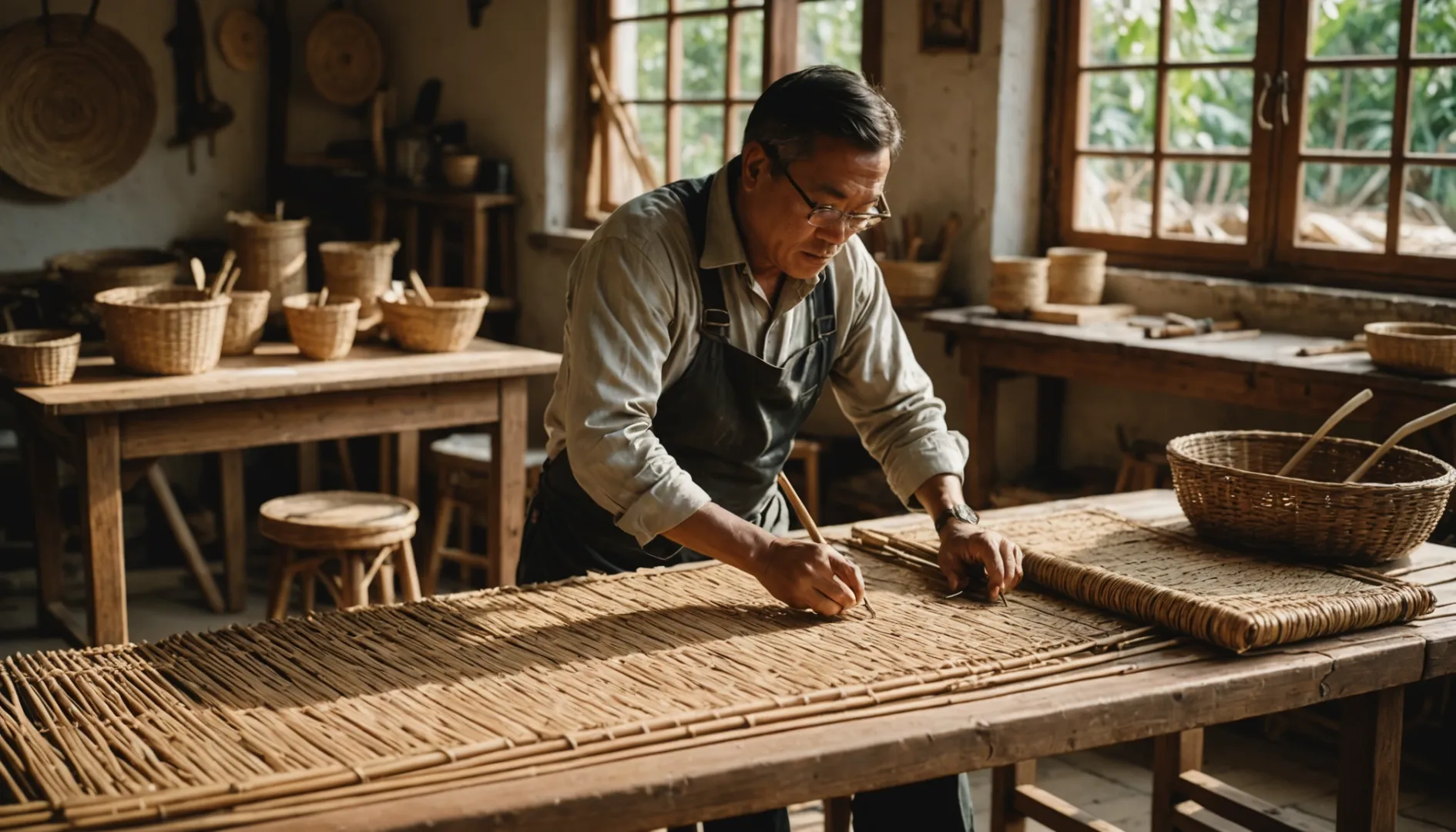
Ever glanced at a price tag on rattan furniture and felt a wave of sticker shock? Trust me, I’ve been there too.
Rattan furniture carries a hefty price due to its labor-intensive craftsmanship, eco-friendly sourcing, and robust material that promises longevity. These elements collectively justify the higher price point compared to other furniture options.
I remember the first time I considered buying rattan furniture. I was drawn to its natural beauty and rustic charm, but the price gave me pause. However, delving deeper, I discovered that each piece is handcrafted, often requiring hours of meticulous labor. The sustainable practices behind sourcing rattan also play a significant role—it’s not just about cutting and assembling; it’s about respecting nature’s rhythm.
And then there’s the durability factor. A friend once shared how her rattan chair survived years of summer storms on her porch without losing its charm. It’s these stories that convinced me that investing in rattan is about valuing quality over quantity. Sure, it might be a splurge upfront, but knowing you’re supporting craftsmanship and sustainability makes it worth every penny.
Rattan furniture is more durable than bamboo.True
Rattan is known for its strength and flexibility, making it more durable.
Rattan furniture's high cost is due to labor intensity.True
Crafting rattan requires skilled labor, contributing significantly to its price.
What Are the Key Factors Driving Up Rattan Prices?
Ever wondered why your favorite rattan chair is suddenly pricier? Let’s dive into the forces driving up those costs.
Rising demand, environmental changes, and limited supply are key factors driving up rattan prices. With increased interest in sustainable materials and global supply chain disruptions, rattan costs have surged. Understanding these dynamics can help consumers and businesses make informed decisions about purchasing and investing in rattan products.
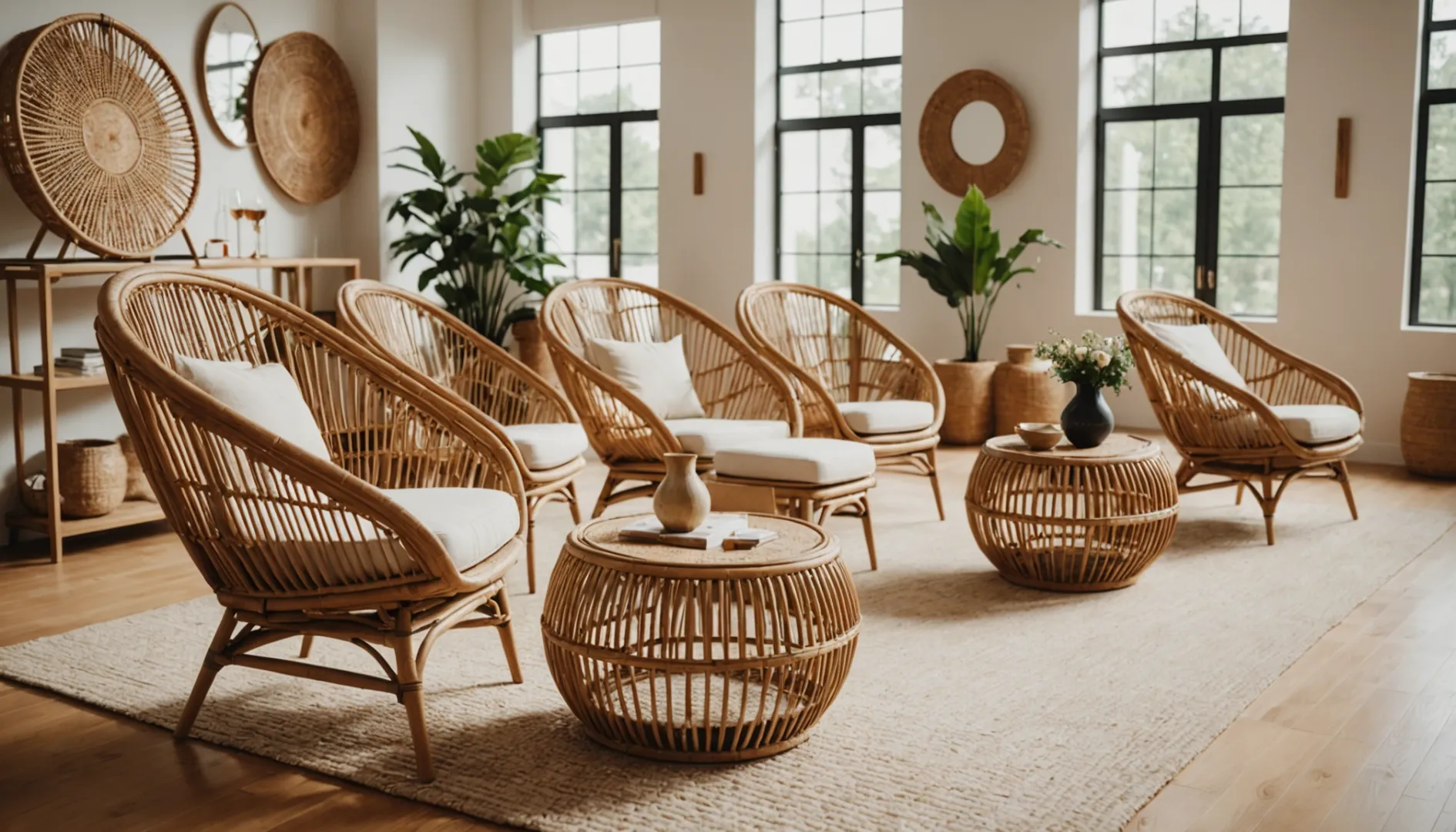
Increasing Demand for Eco-Friendly Materials
I remember the first time I fell in love with a beautifully crafted rattan chair. It was perfect for my living room, exuding warmth and sustainability. The demand for eco-friendly materials like rattan has soared as more people, like me, seek products that align with our commitment to the environment. Rattan, known for its rapid growth and renewability, ticks all the boxes for environmentally-conscious consumers. This growing demand has not only made it a popular choice but also driven up competition and prices in the market.
One of the primary drivers of rising rattan prices is this growing demand for eco-friendly materials. As consumers become more conscious of sustainability practices1, they seek out products that have minimal environmental impact.
Supply Chain Disruptions
The journey of rattan from tropical forests to my doorstep has been anything but smooth, especially in recent times. Global supply chain disruptions have made this journey even more challenging. The pandemic’s impact on logistics has led to delays and increased transportation costs. Imagine waiting for months for your rattan piece, only to find out that shipping issues have pushed its arrival further.
Another significant factor contributing to the cost increase is the disruption in global supply chains. Events such as the COVID-19 pandemic have exacerbated these issues, causing delays and increased costs for transportation logistics2. These hurdles have inevitably added to the expense of rattan.
Environmental Impact on Rattan Growth
Having once visited a rattan farm, I witnessed firsthand how delicate its growth process can be. Environmental changes, including deforestation and climate shifts, are now threatening these resources. Regions that once boasted bountiful rattan are seeing their supplies dwindle.
Environmental changes affect the availability of rattan due to deforestation and climate change. Regions traditionally supplying abundant rattan face dwindling resources because of these changes. To combat this, harvesting restrictions3 are often enforced to conserve what little remains.
Quality and Craftsmanship
Whenever I admire a piece of high-quality rattan furniture, I can’t help but appreciate the artistry behind it. The meticulous craftsmanship involved requires skill and patience—qualities that artisans pour into each creation.
The quality of rattan products plays a role in pricing as well. High-quality rattan is strong and durable but comes at a premium due to meticulous craftsmanship involved in its production.
It’s not just furniture; it’s art—each piece a testament to their dedication. As a result, these premium items command higher prices, reflecting the value of true artisan craftsmanship4. Buying such pieces is an investment in both quality and tradition.
Rattan prices have risen due to increased global demand.True
Rising global demand for eco-friendly furniture has driven up rattan prices.
Rattan is less durable than bamboo for furniture making.False
Rattan is often more durable and flexible than bamboo, ideal for furniture.
How Do Rattan and Bamboo Compare in Cost and Quality?
Have you ever stood in a furniture store, torn between rattan and bamboo?
Rattan generally offers greater durability and flexibility, often at a higher cost than bamboo, which is lightweight and more affordable. Both materials provide unique aesthetic qualities, but rattan’s craftsmanship can contribute to superior quality in furniture.
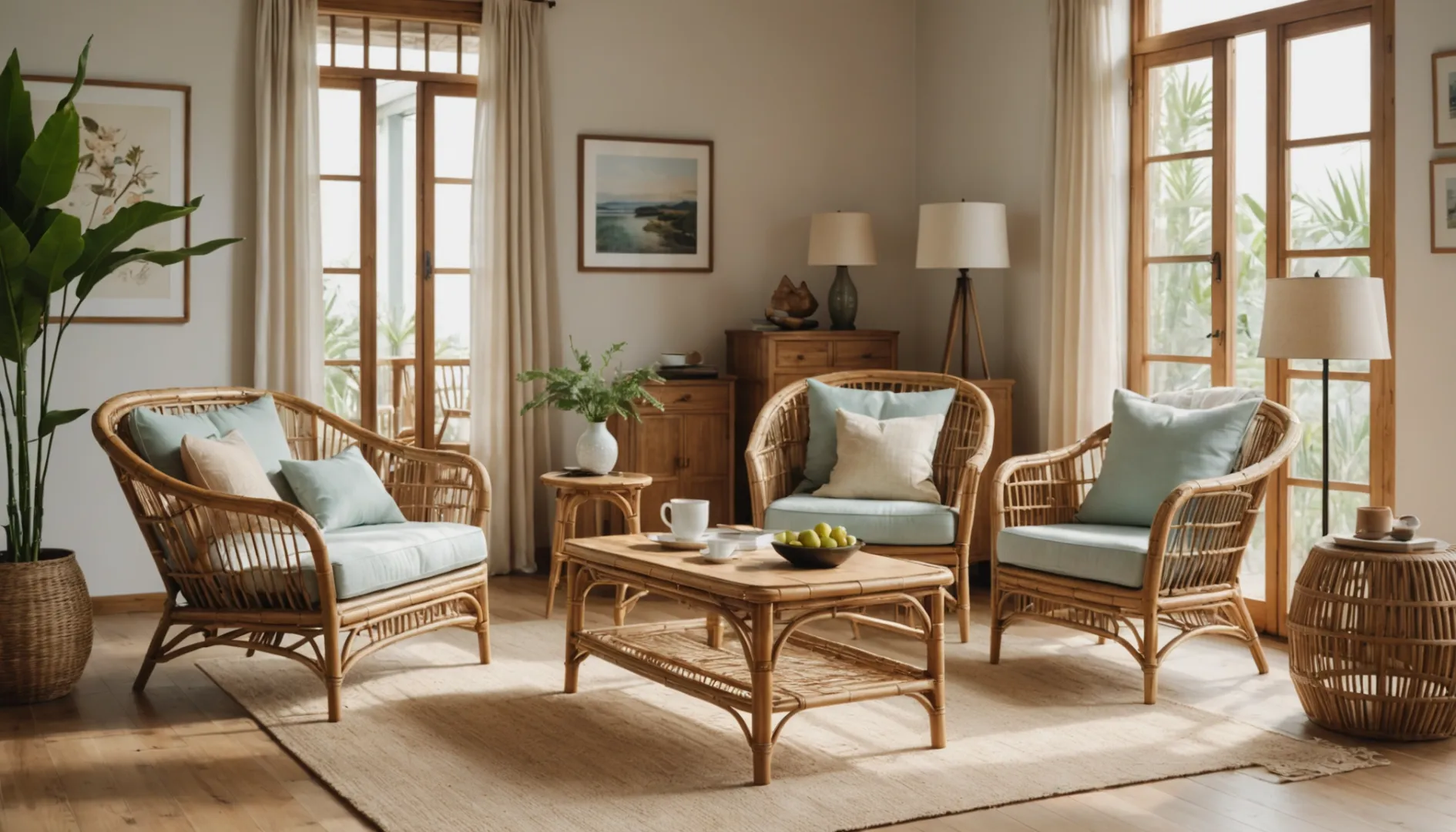
Understanding the Materials
Let me take you on a journey into my living room, where my fascination with furniture truly began. I remember standing there, gazing at a beautifully crafted rattan chair. It was love at first sight. Rattan, known for its durability and flexibility, is like the rugged hero of the furniture world. It’s a climbing palm that artisans can transform into intricate designs that exude aesthetic appeal5. On the other hand, bamboo reminds me of the eco-warrior friend who’s always advocating for the planet. It’s a fast-growing grass, hollow and lightweight, making it an environmentally friendly choice due to its rapid renewability.
Cost Considerations
When it comes to cost, I’ve always found myself gravitating toward bamboo for its affordability. Its rapid growth means it’s abundant and less expensive to process. If you’re like me, always looking for ways to balance quality with budget, bamboo is the economical choice. However, when I think about rattan, I can’t help but appreciate the craftsmanship that goes into each piece, often justifying its higher price tag. Rattan requires more complex harvesting and processing requirements which makes it pricier but also more likely to stand the test of time.
Quality and Durability
I once owned a rattan outdoor set that survived countless summers and stormy winters. Rattan’s strength and flexibility allow for elaborate designs that can withstand environmental factors over time. This makes it a fantastic choice for outdoor furniture where resilience against environmental factors is crucial. Bamboo, while not as robust unless treated or laminated, appeals through its natural look and eco-friendly vibe.
Craftsmanship and Aesthetic Appeal
The craftsmanship in rattan products often leaves me in awe. Its flexibility lets artisans create mesmerizing patterns that enhance its aesthetic value—a feature I’ve come to appreciate every time I host guests at home. Bamboo’s simpler aesthetic appeals to my minimalist side with its clean lines and natural finish. Both materials can be styled creatively6 to suit different decor themes from rustic to modern.
Environmental Impact
I’m always conscious about the environmental impact of my choices. Bamboo’s rapid growth requires minimal pesticides or fertilizers, making it an excellent option for those of us trying to be eco-friendly consumers with a lower environmental footprint compared to other materials. While rattan also offers some environmental benefits through sustainable harvesting practices—promoting forest conservation when managed sustainably—it’s crucial to consider how these materials are sourced and produced.
In my experience, both rattan and bamboo have their unique advantages. Whether you’re drawn to the durability of rattan or the eco-friendly nature of bamboo, understanding these differences can help guide your choice. Consider what matters most to you—be it cost, quality or environmental impact—when making your decision.
Rattan furniture is generally more expensive than bamboo.True
Rattan is typically pricier due to its durability and craftsmanship.
Bamboo furniture is less durable than rattan.True
Bamboo is less durable because it is hollow and more prone to damage.
What Should You Look for in High-Quality Rattan Furniture?
Ever browsed through rattan furniture and wondered what makes one piece better than the other?
High-quality rattan furniture should have tightly woven fibers, sturdy aluminum frames, and UV-resistant coatings. Opt for synthetic rattan for outdoor durability. These elements ensure your furniture stays beautiful and lasts longer, even with constant use.
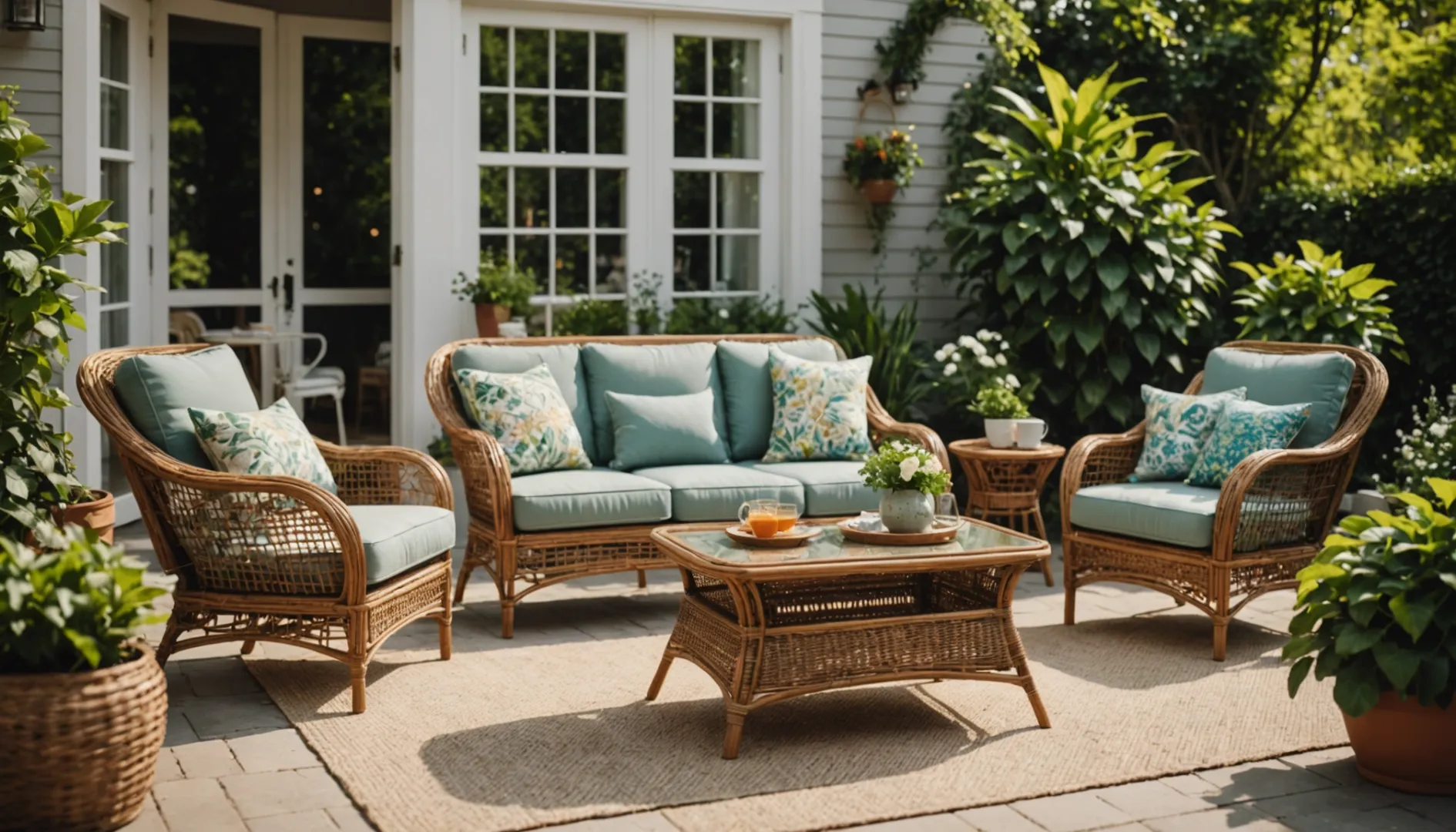
Understanding Material Quality
When I first set out to buy rattan furniture, I was a bit overwhelmed by the choice between natural and synthetic rattan. Natural rattan, derived from vine-like plants, is undeniably beautiful. It can bring a touch of elegance and warmth to any space. But here’s the kicker: it doesn’t hold up well to the whims of weather. That’s when synthetic rattan caught my eye. Made from polyethylene, it looks just like the real thing but can brave the elements without losing its charm. If you’re planning to use your furniture outdoors, synthetic is definitely the way to go—no fading, no cracking.
Frame Construction
I learned the hard way that not all frames are created equal. Once, I bought a stunning rattan set with steel frames, only to watch it rust after the first rainy season. Since then, I’ve sworn by powder-coated aluminum7 frames. They’re light, they’re tough, and importantly, they don’t rust. If you’re in the market for something that lasts, steer clear of untreated steel.
Weaving Technique
Have you ever seen a piece of rattan furniture that just seemed off? That’s often due to poor weaving. In my experience, tightly woven patterns not only look great but they’re also built to last. I remember chatting with a craftsman who showed me the difference—his hand-woven pieces were meticulous works of art, each fiber perfectly in place. It’s worth asking about the weaving technique; it speaks volumes about the quality.
UV Protection and Coating
Placing furniture in direct sunlight can be a gamble unless it’s UV-protected. I once left a chair outside all summer only to find it cracked and faded by fall. Now, I always check for UV-resistant coatings on synthetic rattan. It’s a lifesaver if you’re planning to keep your furniture in sunny spots.
Cushion Material and Quality
Cushions can make or break your lounging experience. Trust me, I’ve sat on some rock-hard cushions that could ruin any afternoon siesta. Look for high-density foam that holds its shape and offers comfort. Removable covers are a must for easy cleaning—especially if you have kids or pets who love joining you outside. Water-resistant, quick-drying fabrics prevent mold and mildew, keeping your setup fresh and inviting.
By focusing on these features, you’ll not only enhance your living space’s visual appeal but also invest in furniture that’s built to last. Making informed choices means you’ll enjoy your beautiful rattan pieces for years to come.
High-quality rattan furniture is always weatherproof.False
Not all high-quality rattan furniture is weatherproof; some require treatment.
Durability is a key feature of quality rattan furniture.True
Durability ensures the furniture withstands wear and environmental factors.
Is Investing in Rattan Furniture Worth It?
Imagine sinking into a cozy rattan chair on a sunny afternoon—sounds dreamy, right? But is it a smart investment?
Investing in rattan furniture is worth it due to its aesthetic charm, durability, and eco-friendly nature. Its lightweight yet sturdy design suits both indoor and outdoor spaces, ensuring versatility and long-term use when maintained properly.
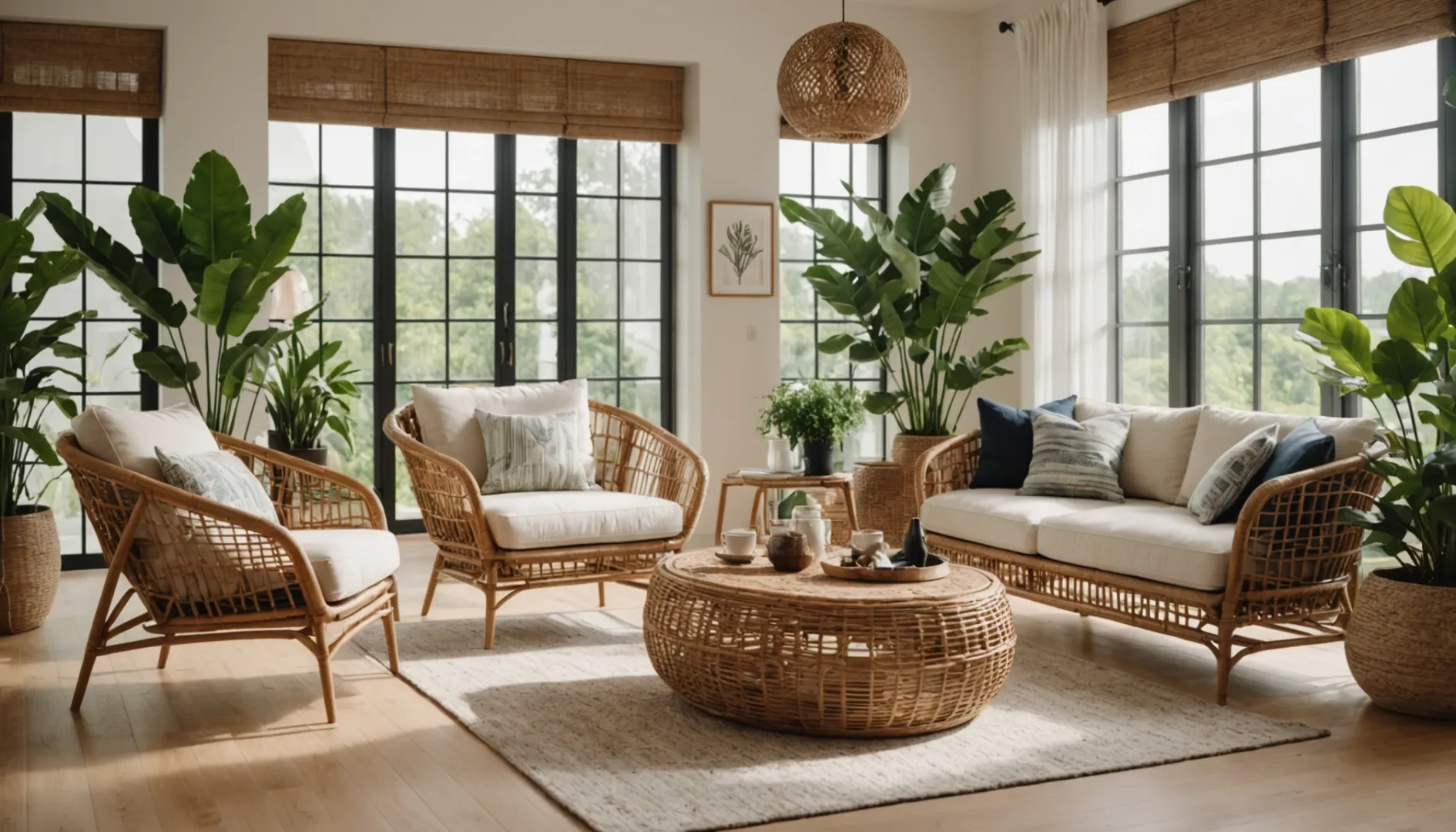
Understanding Rattan Furniture’s Durability
I remember the first time I sat on a rattan chair at my aunt’s beach house. The light breeze, the sound of waves, and the chair’s surprising sturdiness created a perfect moment. Rattan’s natural resilience makes it ideal for all kinds of weather, unlike wood, which sometimes struggles against the elements. However, not all rattan is created equal. If you’re planning to leave it outside, ensure it’s treated to resist weather damage. Comparing materials8 is essential if you’re juggling options like teak or metal for longevity.
Maintenance and Care for Rattan
Maintaining rattan furniture reminds me of caring for a cherished old book—it needs a gentle touch. Regularly dusting with a soft brush keeps it looking new, much like preserving family heirlooms. Direct sunlight can fade its color, so finding that sweet spot away from the sun’s glare is key. When I moved my rattan set outdoors, adding cushions and protective covers was a game-changer for its longevity. More insights on how to maintain rattan9 are invaluable, especially if you want to enjoy it for years.
Style and Versatility
Rattan is like the little black dress of furniture—timeless and versatile. Its lightweight nature means I can easily rearrange my space to suit my mood or occasion. Whether I’m going for a modern vibe or a cozy, traditional feel, there’s a rattan piece out there that fits. Its natural warmth adds a homely touch wherever it goes. For those as particular about aesthetics as I am, exploring style options10 helps in choosing pieces that truly resonate with your home’s vibe.
Environmental Impact of Rattan
Choosing rattan feels like doing a small good deed for the planet. It’s a renewable resource, growing quickly without harming its environment—kind of like planting a tree but faster! When I chose sustainably sourced rattan, it felt like making an eco-friendly statement without compromising on style. Understanding the sustainability11 of rattan helps guide decisions for environmentally conscious buyers like me.
Rattan furniture is more durable than wood furniture.False
Rattan is less durable than hardwoods, prone to weather damage.
Rattan furniture requires regular maintenance to last long.True
Regular cleaning and protection from elements extend rattan's lifespan.
Conclusion
Rattan furniture’s high cost stems from labor-intensive craftsmanship, eco-friendly sourcing, and durability. Rising demand and supply chain disruptions further contribute to its premium pricing.
-
Learn why rattan is favored for sustainable products. ↩
-
Understand the pandemic’s impact on supply chain disruptions. ↩
-
Explore how deforestation impacts rattan supply. ↩
-
Discover the value of skilled artisans in crafting rattan. ↩
-
Discover how rattan furniture enhances home decor with its intricate designs. ↩
-
Learn innovative styling tips for incorporating bamboo furniture into your space. ↩
-
Aluminum frames provide lightweight durability and resist rusting. ↩
-
Compare durability and maintenance of rattan vs teak furniture. ↩
-
Learn effective ways to clean and protect rattan furniture. ↩
-
Discover various design styles for rattan furniture. ↩
-
Understand the eco-friendliness of choosing rattan furniture. ↩

